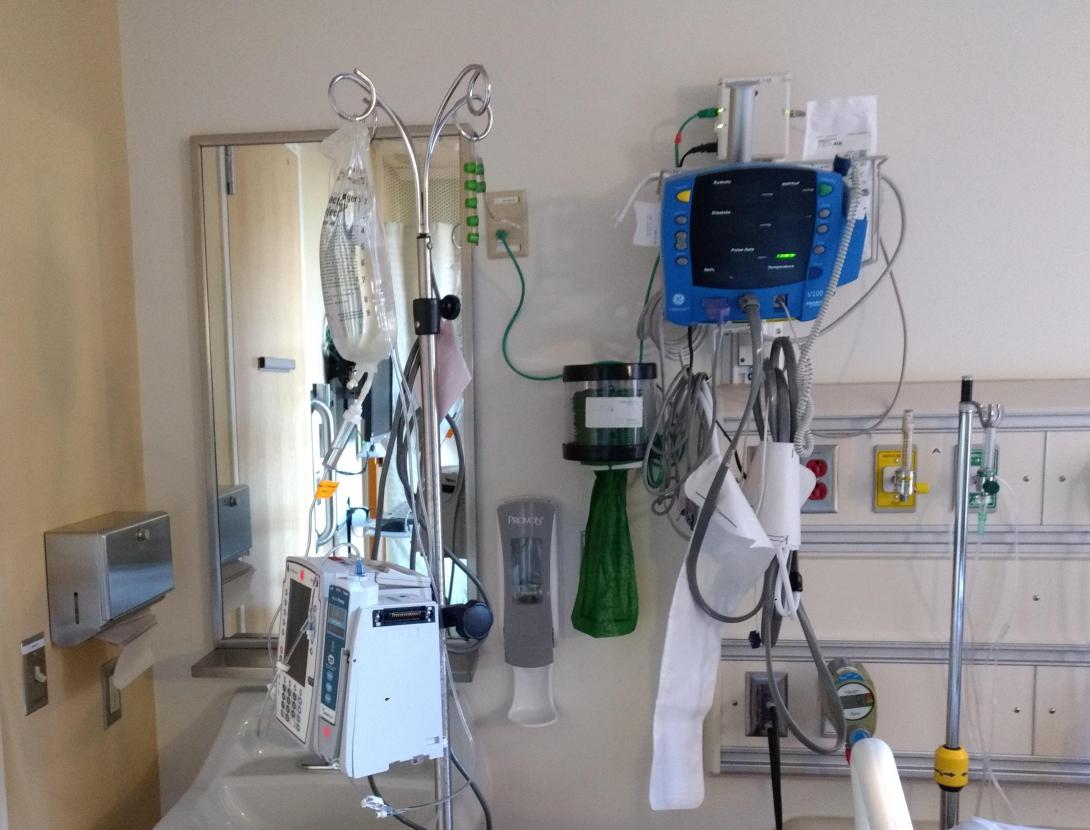
Fifty-eight of Oregon's 60 acute care hospitals are tax-exempt, not-for-profit hospitals. In 1969, the Internal Revenue Service removed the requirement that nonprofit hospitals offer a portion of care without charge (charity) or at rates below cost, instead of implementing what became known as the "community benefit standard." Under this standard, in order to maintain their tax-exempt status, nonprofit hospitals are required to provide “community benefit” instead of charity. More recently, amidst concerns about the nonprofit hospitals’ accountability, Congress added community benefit assessment and reporting requirements in order for nonprofit hospitals to qualify for tax-exempt status under the Affordable Care Act.
Still, the notion of “community benefit” is an elastic one that brings hospitals, boards and patients to loggerheads trying to assign a value to services hospitals claim to give away. Loosely defined, community benefit includes education, health promotion, research, charity care and non-reimbursed Medicaid and Medicare services. But sometimes a nonprofit hospital’s marketing can masquerade as health promotion. When a hospital offers a health fair screening for skin cancer, a joint replacement, or Type 2 diabetes — is that marketing or community benefit?
While the term “nonprofit” conjures images of volunteers operating on shoestring budgets, nonprofit hospitals can be big business. They can be wildly profitable and their tax-exempt status is a very valuable asset. Writing in the journal Health Affairs, Sara Rosenbaum and colleagues at George Washington University, estimated that nonprofit hospitals’ value of federal, state and local tax exemptions; tax-deductibility of charitable contributions; and tax-exempt bond financing was $24.6 billion in 2011. Another national study, reported in the New England Journal of Medicine in 2013, found that while community benefit investments as a percentage of total operating costs averaged 7.5% for about 1,800 hospitals filing Schedule H of Form 990 for tax year 2009, the average for the highest decile was 20 percent and the lowest 1 percent. Only a portion of that variation can be explained by differences in earnings levels.
Assessment and reporting requirements have added a measure of accountability to nonprofit hospitals’ community benefit programs, but concerns persist that communities don’t get back the full value of the tax break they give away. Moreover, the requirements do not address the wide variation among nonprofit hospitals. They focus on process, not results. Most importantly, they do not address the basic question in the minds of policymakers, regulators, the media and the general public: Are nonprofit hospital organizations providing enough community benefit to justify their tax exemption?
In Oregon, nonprofit hospitals also self-report annual community benefit costs to the Oregon Health Authority. According to the health authority’s Community Benefit Report, Oregon hospitals claimed more than $2.19 billion in community benefit in 2016 with unreimbursed Medicare and Medicaid costs accounting for 73 percent of that claimed benefit. But the true value of this benefit to patients may be much less than what nonprofit hospitals say it is. Because hospital-based outpatient providers are paid under a different fee schedule compared with independent office-based providers, hospitals take as their starting point a higher price when calculating their community benefit write-offs on unreimbursed Medicare and Medicaid services. Higher prices, write-offs of the difference between set prices and government reimbursements and creative interpretations of community benefit provide ample opportunities for overestimation.
Another option would be replacing the Affordable Care Act community benefit requirements with an annual, quantitative standard equal to the amount they would pay in taxes without a tax exemption. If an institution did not meet the standard, it would have to pay taxes equal to the shortfall. Proponents of this solution maintain that this would be fairer and easier because under the current situation there remains significant variation in the amount of community benefits provided and it is impossible to ascertain if every nonprofit hospital is doing enough to justify its tax-exempt status.
At the heart of the bargain between patients and non-profit hospitals is a promise that a nonprofit hospital will spend a portion of its revenue on meaningful community services. Consider it a way of directing your taxes to activities that local community members, rather than the government, believe benefit the community as a whole. Oregon has outdated infrastructure and faces a looming public employee retirement system shortfall and a chronically underfunded K-12 education system.
To address these real community needs, policymakers in Salem must revisit the value of all the tax breaks they give away including those given to nonprofit hospitals. Oregonians should not accept deep discounts on the value of tax revenue they pardon nonprofit hospitals from paying in exchange for community benefit programs that may not return the full value they promised. When it comes to building a better future for Oregon, both patients and taxpayers deserve the benefit of the bargain.
Dr. David Russo is a physiatrist and interventional pain physician with Columbia Pain Management P.C. in Hood River.